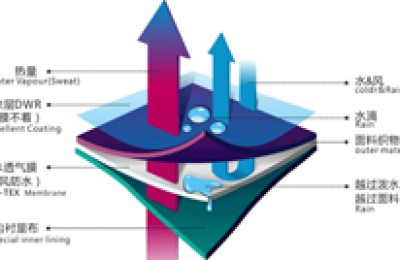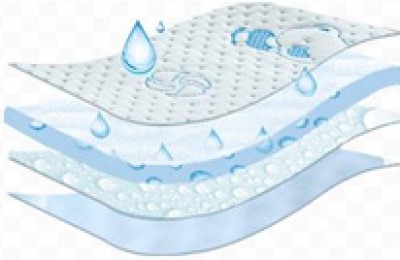According to the latest express data from the customs, from January to August 2015, my country’s total textile and apparel exports were US$184.45 billion, a year-on-year decrease of 4.6%. The monthly decline in August was 5.6%. Although it was 4.8 percentage points narrower than July, the cumulative decline from January to August was still 0.4 percentage points deeper than that from January to July. Among the traditional export markets, the United States is the only country that has accelerated growth. From January to July, the export volume of the textile industry to it increased by 9.8% year-on-year, driving export growth by 1.5 percentage points; the European Union was affected by the continued depreciation of the euro, and its export volume decreased by 10.6% year-on-year. %. The decline in exports to Japan was the most prominent. From January to July, the year-on-year decline reached 12.9%, accounting for 24.7% of the total decline in exports in the entire industry, dragging down the industry’s export growth by 1 percentage point. From January to July, my country’s imports of textiles and clothing from Japan The market share also decreased by 3 percentage points.
In recent years, the share of my country’s exports of textiles and apparel in the Japanese market has been on a downward trend, and the Japanese market’s supporting role in the export growth of my country’s textile industry has also been gradually declining. According to Japanese customs data, my country’s share of Japan’s textile and clothing imports in 2014 was 69.9%, a decrease of 5.1 percentage points from 2011. During the same period, my country’s market share in the United States and the European Union only dropped by 1.2 and 3.3 percentage points respectively. From January to July this year, my country’s market share in Japan dropped by another 3 percentage points year-on-year, and the decline was also higher than that of the United States and the European Union. According to my country’s customs data, exports to Japan accounted for 8.3% of my country’s total textile and apparel exports in 2014, a decrease of 2.7 percentage points from 2011. Japan’s share further dropped to 7.4% from January to July this year. From 2012 to 2014, ASEAN’s share increased by 4.1 percentage points to 12%. From January to July this year, it has increased to 12.4%. Japan’s position as the third largest export market in my country’s textile industry has been replaced by ASEAN.
There are two main reasons for the continued decline in the competitiveness of my country’s textile and apparel exports to Japan: First, the change in the production capacity distribution pattern of exports of textiles and apparel to Japan. In recent years, the comprehensive costs of my country’s textile industry have continued to rise, the prices of export products have increased, and the profit margins of export processing enterprises have continued to shrink. In addition, regional trade cooperation relationships such as the Trans-Pacific Partnership Agreement (TPP) are about to be concluded, and the costs and policies of Southeast Asian countries have The comparative advantage is very obvious. There are increasing cases of Japanese-owned textile and apparel companies and Chinese companies engaged in exporting to Japan investing and building factories in Southeast Asia, and orders from Japanese buyers are also flowing to these regions. Second, the depreciation of the yen has a prominent impact. Affected by Japan’s economic stimulus policy, the Japanese yen has experienced an obvious trend of sustained and substantial depreciation in recent years. From 2012 to the end of August 2015, the cumulative monthly average depreciation rate of the Japanese yen against the RMB reached nearly 40%. Since the currency exchange rates of Southeast Asian countries are not as stable as the RMB, the Japanese yen has depreciated significantly less against currencies such as the Vietnamese Dong than the RMB, and has appreciated against the Indonesian rupiah. In contrast, the price competitiveness of my country’s export products has been further weakened.
Affected by the above factors, the export price of my country’s textile industry to Japan has increased significantly in recent years, the export volume has absolutely decreased, and the market share has been gradually eroded by Southeast Asian countries. According to Japanese customs data, the unit price of textiles and clothing imported by Japan from my country increased by 31.2% from 2012 to 2014, which was 10.9 percentage points higher than the price increase of Japan’s imports from ASEAN. From 2012 to 2014, Japan’s imports of textiles and clothing from my country dropped by 22.4%, while imports from ASEAN increased significantly by 45.2% during the same period. From January to July this year, Japan’s imports from my country were basically the same as the same period last year, and were mainly supported by rising prices. . The market share of Southeast Asian countries in Japan has increased significantly. From January to July this year alone, Vietnam, Indonesia, and Bangladesh accounted for a total of 2.4 percentage points in Japan’s total textile and apparel imports, with Vietnam’s share increasing by 1.4 percentage points.
The pressure on my country’s textile industry to stabilize market share in Japan has become increasingly prominent. Textile companies should combine international procurement needs and changes in global industrial layout to further enhance transnational resource allocation capabilities and create a coordinated and complementary manufacturing industry system at home and abroad. At the same time, we will increase our awareness of exchange rate risk prevention and actively avoid exchange rate losses.
(The author is an industry analyst at China Textile Economic Research Center)
Analysis of the reasons for the decline in competitiveness of my country’s textile and apparel exports to Japan
According to the latest express data from the customs, from January to August 2015, my country’s total textile and apparel exports were US$184.45 billion, a year-on-year decrease of 4.6%. The monthly decl…
This article is from the Internet, does not represent Composite Fabric,bonded Fabric,Lamination Fabric position, reproduced please specify the source.https://www.yjtextile.com/archives/11056





